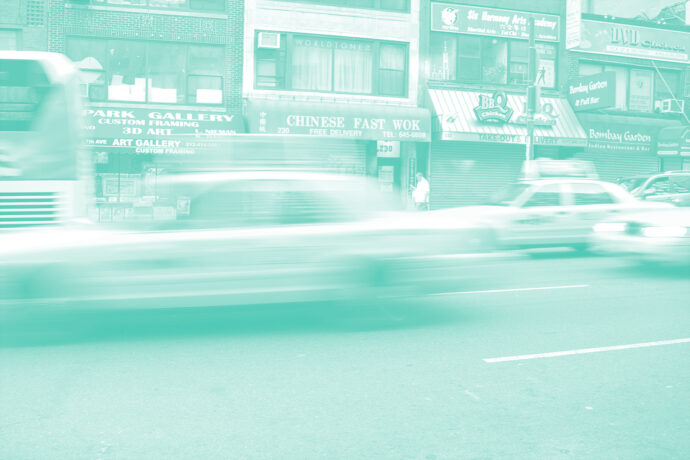“John, this is amazing!”
And he’s, like, “I know, right?”
And we’re, like, “We love the fan idea!”
And he’s like, “Put it up so the X-Equals audience can learn a little more about Motion Blur.”
And we were, like, “Yeeeeaaahhhhhh!”
John has been working and teaching over at CreativeLive since 2010 so he’s learned a thing or two.
And he’s willing to share as he helps you make sense of motion blur – complete with some really creative examples.
What To Do If They Won’t Stop Moving!
Yesterday I got a question from a friend on Facebook asking how to get their flash to sync with their camera at a shutter speed higher than 1/125. This friend wanted to freeze the motion of their subject (children in this case). This question also comes up in almost every CreativeLive strobe lighting class that I’ve worked on. I hope that this post can help clear up the big misconceptions about shutter speed and flash photography.
Instead of using children, I decided on something that moves even faster.
A box fan.
Let’s Turn It On!
In the first series of images below we see 6 images of the fan.
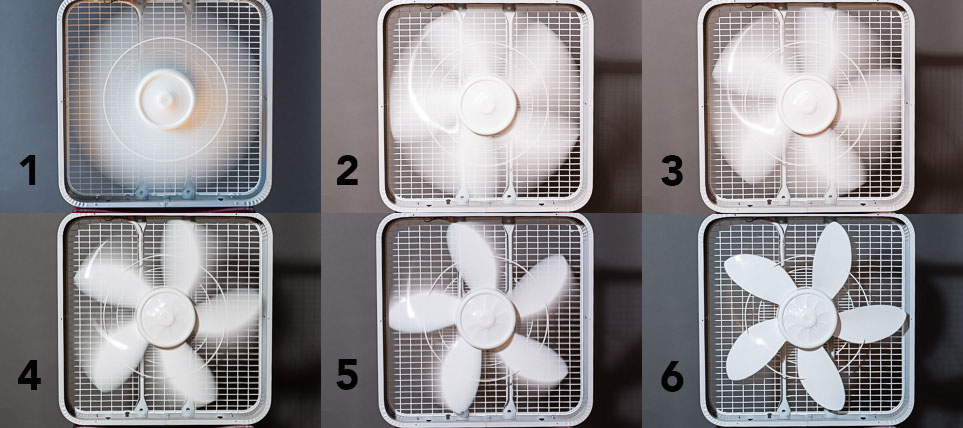
The first one (1) was taken without a flash. The rest were taken with different brands and models of studio strobes. And the most important thing to recognize here is that all 6 images were taken at 1/15 of a second, and the fan was running at the same speed in all the images.
What I hope to show you here is that, in the studio with strobes, the shutter speed is pretty much irrelevant. As long as …
- it isn’t so slow that ambient light infiltrates the exposure or…
- isn’t so fast that the camera’s shutter cannot synchronize with the flash. Too fast, and it will leave a black band across one side of the image (see my previous post on sync speed for more information on that).
As noted above:
- #1 was taken at 1/15th second with no flash
- #2 was with a Speedotron 805 pack and a model 102 head (1/670 second flash duration)
- #3 was with the same Speedotron 805 pack, but with a model 202 head (1/900 second flash duration)
- #4 was taken with an SPS Systems Excalibur 1600 monolight (unknown flash duration)
- #5 was taken with a Speedotron Force 5 monolight (1/1500 second flash duration)
- #6 was taken with a Paul C. Buff Einstein monolight in Action mode (1/4826 second flash duration, and yes, the fan was spinning)
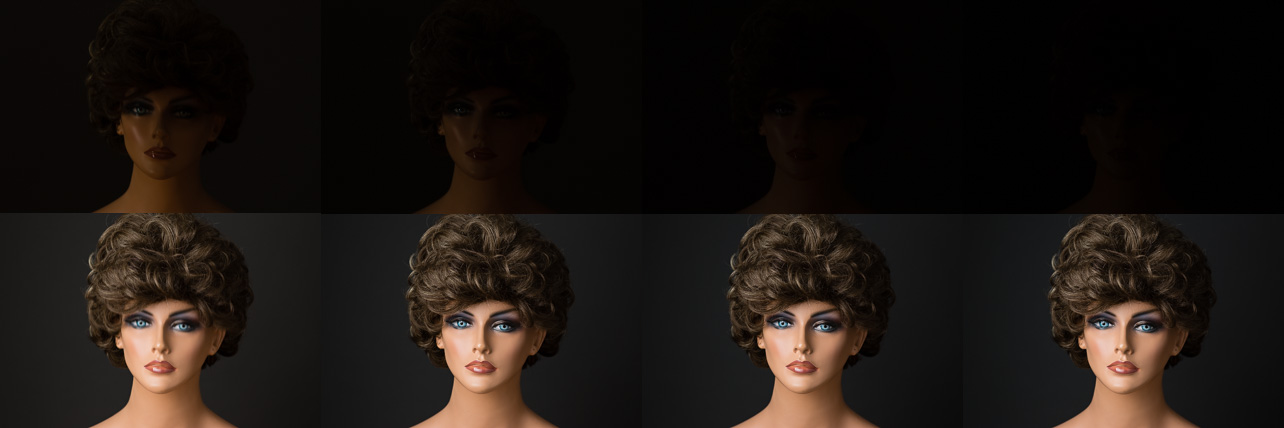
In the above series of images, the shutter speeds in both rows go from 1/15 to 1/30 to 1/60, and finally 1/125 (all at f/7.1). In the top row, the studio strobe was not turned on, so you can see the base exposure. There is a slight rendering of the subject in the 1/15 and even the 1/30 second shots, but not enough to affect the exposure when the strobe is turned on (second row).
The important factor … is the flash duration of your strobes or speedlights.
At 1/60 and 1/125 there is no ambient light at all in the exposure. All of the images in the bottom row show the same exposure, controlled by the ISO, flash power, and aperture. The shutter speed is inconsequential to the overall exposure in a reasonably dark studio setting.
What about speedlights?
What about high-speed sync and speedlights? Let’s look at another set of images.

- #1 is the same reference image as used above at 1/15 second with no flash.
- #2 was taken with a Canon 430EXii flash at 1/15 second
- #3 was taken with a Canon 430EXii flash in high-speed sync mode at 1/500 second
You can see that engaging high-speed sync does not help stop subject motion. It, interestingly, led to more subject motion, even though the shutter speed was at 1/500 second. Additionally, high-speed sync robs the flash of power, leading to an underexposed image.
This is because high-speed sync works by pulsing the flash multiple times at a lower power during the exposure. This makes the speed light less bright, helps burn through batteries, and does not help stop motion blur.
I hope that this helps clarify why the shutter speed is usually not an important factor in determining exposure or in stopping motion when working in a studio with speedlights or strobes. The important factor here is the flash duration of your strobes or speedlights.
What About Action Stopping Capabilities Of The Speedlight?
I only have one speed light to test with, a Canon 430 EXii. So here are some more photos of the fan.
First, I will start out with this series of photos taken with no flash. Here only the shutter speed of the camera is affecting the amount of motion blur in the fan blades. Shutter speeds range from 1/8 second to 1/1000 second using window light.
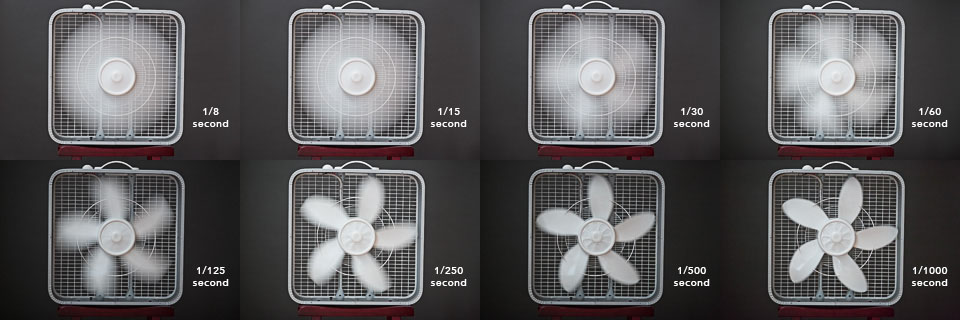
The next series was taken with the flash on Manual power control and the camera shutter set to 1/15th second. The first image is without flash to show the ambient light at 1/15 second at f/8. The images then progress from 1/64 power to full power.
The f/stop was adjusted for each frame to give the same exposure.
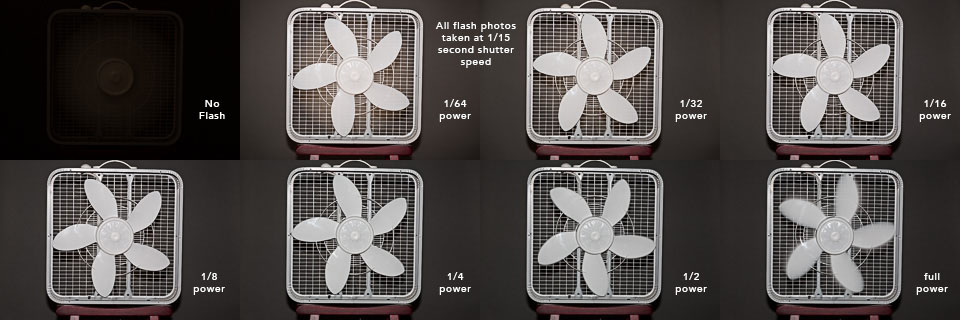
This next series is the same as the above, except that the shutter speed was increased to 1/125 second. I want you to notice that most of the images look exactly the same, despite the 3-step difference in shutter speed. Where you will see a difference is in the low powered shots where the aperture had to be opened up. I had to compensate for the low power flash, causing more ambient light to be recorded at 1/15th than at 1/125th. But the edges of the blades are still about the same, despite the ghosting.
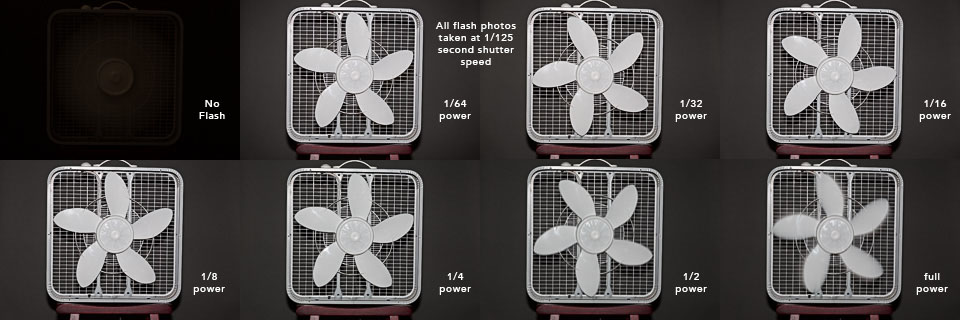
Here are close-ups of the fan blades at 1/4 power on the flash. On the left is 1/15 second at f/11 and on the right is 1/125 second at f/11. The motion blur is the same. The flash duration is the effective shutter speed in the studio. The flash doesn’t care how long the shutter is open, and the flash isn’t affected by how long the shutter is open (as long as the shutter speed is at or below the sync speed).
If the room was completely dark, the camera shutter could be set to 30 seconds or more, and the exposure would still be the same as at 1/125. The only light hitting the fan is the brief flash coming from the speedlight.

One more series of photos and then I hope we’re done with the fan and can get back to more creative endeavors. This time, the flash is in eTTL mode at a range of shutter speeds. The aperture is the same (f/5.6) in the 6 flash lit shots, the output of the speed light is controlled by the eTTL circuitry. The seventh image is the fan at 1/2000 second with no flash for comparison.
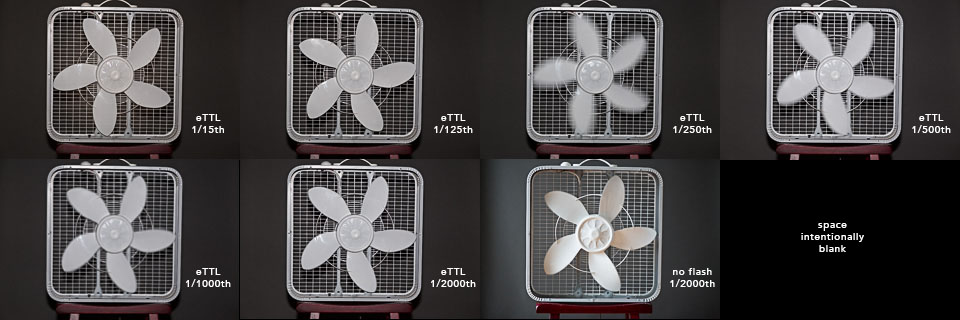
One of the things to notice in this series is that at 1/15 and 1/125 (the first two images) the flash is in normal mode, and the speed of the flash freezes the blades. Above 1/200 second the flash is in high-speed sync mode where the flash fires a series of flashes (too quick in succession for the eye to see) as the shutter curtains move across the sensor. Because of the rapid movement of the fan blades, they are in different positions for each of the flashes.
The fan blades show more motion at the faster shutter speeds (1/250, 1/500, 1/1000 second). At 1/2000 second the shutter speed alone stops the blades, as you can see by comparing the last two images, both taken at 1/2000 second. One is with the flash, and one is without the flash.
Most subjects probably won’t be moving as fast as the fan is, so you might not get a lot of subject motion blur using high-speed sync. I am exaggerating the effect here to make the point that high-speed sync is a tool used to help balance outdoor exposures between flash and sunlight while maintaining large apertures for shallow depth of field.
It isn’t meant to help stop subject motion, and, as can be seen here, may show more motion in extreme conditions.
